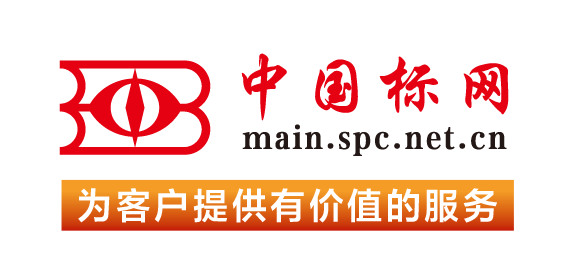【国外标准】 Standard Practice for Building Enclosure Commissioning
本网站 发布时间:
2024-02-28
开通会员免费在线看70000余条国内标准,赠送文本下载次数,单本最低仅合13.3元!还可享标准出版进度查询、定制跟踪推送、标准查新等超多特权!
查看详情>>
适用范围:
6.1 This practice is intended to serve as a concise, authoritative, and technically sound practice for Building Enclosure Commissioning (BECx) that is based upon:6.1.1 The Owner Project Requirements;6.1.2 Clearly defined and enforceable levels of BECx; and6.1.3 Minimum core competencies required of the BECxP and associated service-providers28 (see 4.2) to qualify as Fundamental or Enhanced BECx under this practice.6.2 This practice is suitable for use as an independently applied standard for new buildings and structures, or as part of a more broadly based Total (or “Whole”) Building Commissioning Program.1.1 This practice is intended to serve as a concise, authoritative, and technically sound practice for Building Enclosure Commissioning (BECx) that establishes two levels of BECx: Fundamental and Enhanced (refer also to Section 4).1.2 The BECx process as defined in this practice includes the following phases and sub-phases:1.2.1 Pre-design,1.2.2 Design,1.2.2.1 Schematic Design,1.2.2.2 Design Development,1.2.2.3 Construction Documentation,1.2.3 Bidding and Negotiation Phase,1.2.4 Construction,1.2.4.1 Pre-Construction,1.2.4.2 Construction Administration, and1.2.5 Occupancy and Operations.1.3 This practice includes a mandatory OPR Development Guideline (Annex A1) and requires the development of an OPR for both Fundamental and Enhanced BECx that addresses, at a minimum, the performance attributes and metrics included in Annex A1 of this practice.1.4 This practice includes mandatory BECx Performance Testing Requirements (Annex A2) approved for use with this practice to evaluate the performance and durability of enclosure materials, components, systems, and assemblies.1.5 This practice mandates independent design review during the Design Phase of both Fundamental and Enhanced BECx.1.6 This practice recognizes that the OPR for exterior enclosure performance and environmental separation may exceed the baseline requirements of applicable building codes and standards and provides guidance for the development of an OPR based on the following attributes as defined in Annex A1 of this practice:1.6.1 Energy,1.6.2 Environment,1.6.3 Safety,1.6.4 Security,1.6.5 Durability,1.6.6 Sustainability, and1.6.7 Operation.1.7 The terms “building enclosure” and “enclosure” as they appear in this practice refer collectively to all materials, components, systems, and assemblies intended to provide shelter and environmental separation between interior and exterior, or between two or more environmentally distinct interior spaces in a building or structure.1.8 This practice establishes that the Building Enclosure Commissioning Provider (BECxP) refers specifically to the individual retained by the Owner to develop, manage, and be in responsible charge of the BECx process, including individual members and technical specialists that may comprise the BECx group (see 4.2).1.9 The role and responsibilities of the BECxP as defined by this practice are not intended to supersede or otherwise replace the contractual obligations reserved specifically for the parties responsible for the design and construction of a building or structure, nor the duties that may otherwise be assigned to those parties by applicable regulatory or statutory law.1.10 This practice is not intended to warrant or otherwise guarantee the as-built or in-service durability, or both, and performance of enclosure materials, components, systems, and assemblies.1.11 The values stated in SI units are to be regarded as standard. The values given in parentheses are mathematical conversions to inch-pound units that are provided for information only and are not considered standard.1.12 This standard does not purport to address all of the safety concerns, if any, associated with its use. It is the responsibility of the user of this standard to establish appropriate safety, health, and environmental practices and determine the applicability of regulatory limitations prior to use.1.13 This international standard was developed in accordance with internationally recognized principles on standardization established in the Decision on Principles for the Development of International Standards, Guides and Recommendations issued by the World Trade Organization Technical Barriers to Trade (TBT) Committee.
标准号:
ASTM E2813-18
标准名称:
Standard Practice for Building Enclosure Commissioning
英文名称:
Standard Practice for Building Enclosure Commissioning标准状态:
Active-
发布日期:
-
实施日期:
出版语种:
- 推荐标准
- ASTM 51401-21 Standard Practice for Use of a Dichromate Dosimetry System
- ASTM 51956-21 Standard Practice for Use of a Thermoluminescence-Dosimetry System (TLD System) for Radiation Processing
- ASTM A1010/A1010M-24 Standard Specification for Higher-Strength Martensitic Stainless Steel Plate, Sheet, and Strip
- ASTM A1016/A1016M-24 Standard Specification for General Requirements for Ferritic Alloy Steel, Austenitic Alloy Steel, and Stainless Steel Tubes
- ASTM A105/A105M-24 Standard Specification for Carbon Steel Forgings for Piping Applications
- ASTM A1064/A1064M-24 Standard Specification for Carbon-Steel Wire and Welded Wire Reinforcement, Plain and Deformed, for Concrete
- ASTM A108-24 Standard Specification for Steel Bar, Carbon and Alloy, Cold-Finished
- ASTM A1080/A1080M-24 Standard Practice for Hot Isostatic Pressing of Steel, Stainless Steel, and Related Alloy Castings
- ASTM A1090/A1090M-19(2024) Standard Specification for Forged Rings and Hollows for Use as Base Plates in Power Transmission Structures
- ASTM A1115/A1115M-24 Standard Practice for Construction of Mechanically Stabilized Earth Walls with Inextensible Soil Reinforcement
- ASTM A1128-24 Standard Specification for Stainless Steel Shielded, Rubber Gasketed Couplings Having an Integral Restraint Feature for Joining Hubless Cast Iron Soil Pipes and Fittings Where External Restraint Is Required
- ASTM A179/A179M-24 Standard Specification for Seamless Cold-Drawn Low-Carbon Steel Heat-Exchanger and Condenser Tubes
- ASTM A234/A234M-24 Standard Specification for Piping Fittings of Wrought Carbon Steel and Alloy Steel for Moderate and High Temperature Service
- ASTM A242/A242M-24 Standard Specification for High-Strength Low-Alloy Structural Steel
- ASTM A249/A249M-24a Standard Specification for Welded Austenitic Steel Boiler, Superheater, Heat-Exchanger, and Condenser Tubes
 我的标准
我的标准 购物车
购物车 400-168-0010
400-168-0010














